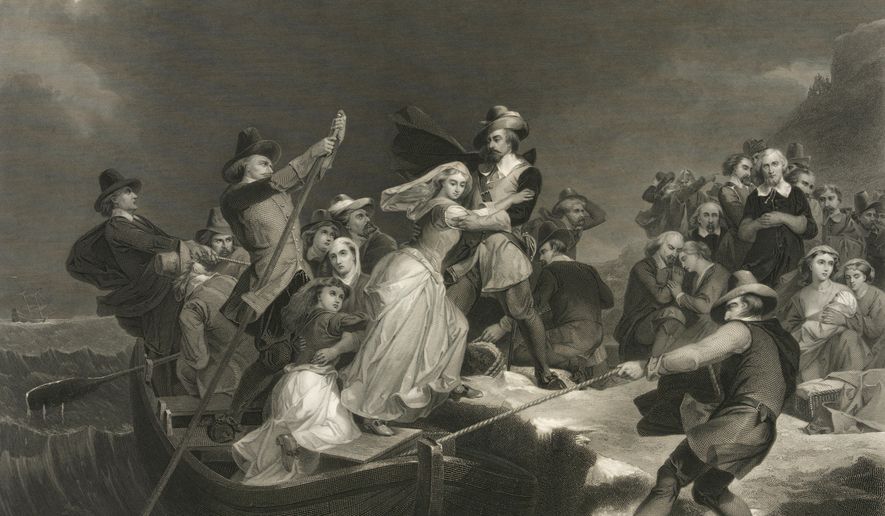The feast shared by the Pilgrims and Wampanoag in the fall of 1621 came about by accident.
After having barely survived their first year in Plymouth, the religious separatists from England celebrated a successful harvest — a harvest of corn and squash that had been introduced to the Pilgrims by the Indians — by holding a traditional day of thanksgiving.
“As part of their celebration, they begin firing off guns. The Wampanoags hear the sound and think the colony is coming under attack … dozens of Wampanoag armed men show up at the colony,” said David Silverman, a historian at George Washington University, in this episode of History As It Happens.
“This could have become an armed standoff if anyone overreacted to the surprise, but instead the trust they had built up over the previous months led the English to invite the Wampanoags to stay. And they did,” said Mr. Silverman, the author of “This Land is Their Land: The Wampanoag Indians, Plymouth Colony, and the Troubled History of Thanksgiving.”
But the feast that came to be known as the first Thanksgiving in American lore was hardly noted by the English settlers afterward, and the Wampanoags did not invoke it in diplomacy. Not until the early to mid-19th century were Thanksgiving celebrations linked to the Pilgrims.
SEE ALSO: History As It Happens: Xi Jinping forever
This podcast episode is about myth-busting. No mythic origin story is as cherished as the first Thanksgiving, which evokes powerful feelings of patriotism and national greatness.
But the feast in 1621 was a non-event. More important to the Pilgrims and Wampanoags — and the real reason they were able to sit down for dinner in the first place — was their mutual defense pact, agreed to shortly after the Pilgrims landed.
The Wampanoags had made a strategic decision to uneasily align themselves with the English newcomers because they had come under severe pressure from the neighboring Narragansett tribe. A disease epidemic had killed a majority of the estimated 30,000 Wampanoags in the Plymouth region, leaving them susceptible to domination in their inter-tribal rivalry.
“And then the Mayflower arrives. The Wampanoags’ leader Ousamiquin had a choice to make. He knew the [English] were ruthless. He knew they had metal weapons including firearms. And he thought perhaps, even though this was taking a risk, he could reach out to them and harness their resources to defend the Wampanoags’ independence against the Narragansetts,” Mr. Silverman said.
The myth of the first Thanksgiving, taught to every American school kid, also obscures the bloody realities of colonialism. In the tale of heroic Pilgrims, the Indians play a passive role and then disappear. The reality was far different.
The uneasy peace between English settlers and indigenous peoples in what are now the New England states came to a permanent end in 1675 in King Philip’s War, which witnessed atrocities committed by all sides: families murdered or taken captive, houses burned, men tortured and beheaded.
SEE ALSO: History As It Happens: King George III was no ‘power-mad little petty tyrant’
“There is a sizable portion of the public that believes when we turn a critical eye to founding myths, they suspect we’re trying to tear down the country. … My job is to teach students and the public to think critically about narratives that we otherwise just assume to be true,” Mr. Silverman said.
Learn more about what happened in 17th century New England, starting with the first Thanksgiving, by downloading this episode of History As It Happens.




